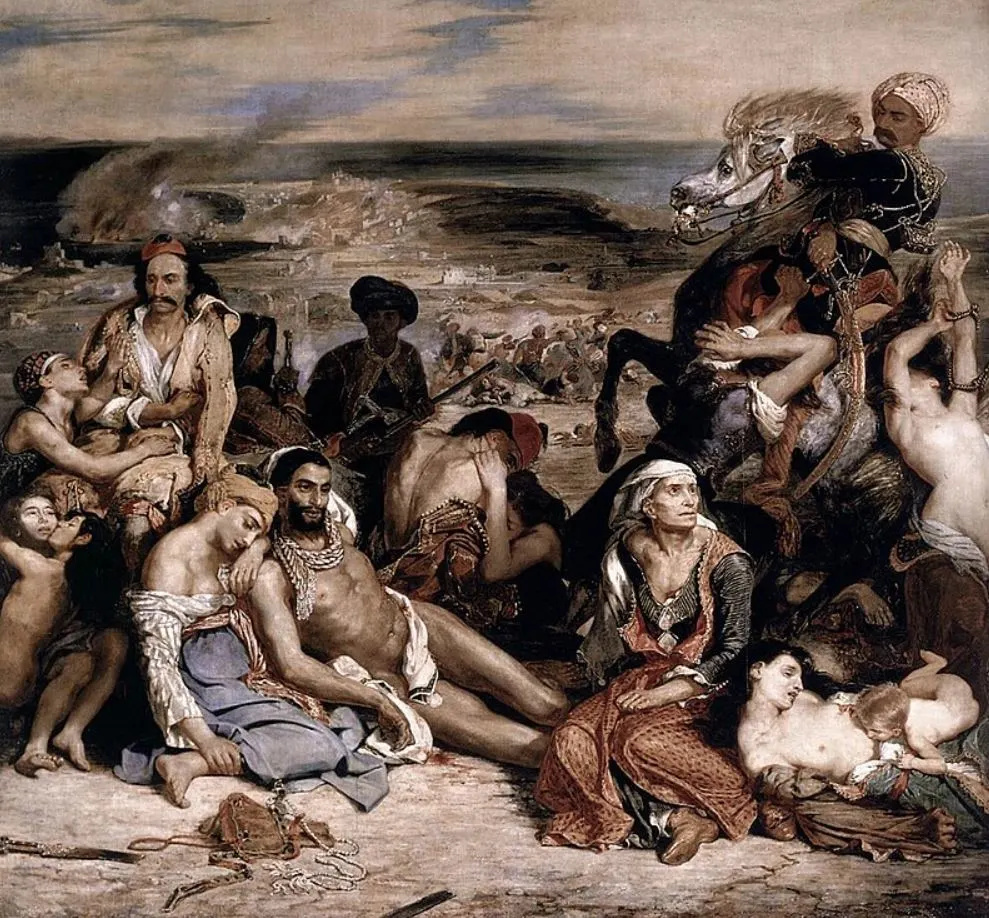When an artist produces preparatory drawings that are at the same level as some of his most famous works, then you know it’s one of the greatest masters in history.
Eugène Delacroix (1798-1863) was one of the leading Romantic artists of the 19th century and produced numerous monumental Romantic paintings. Color and emotion were the main ingredients of his works, something exemplified by this remarkable work of art.
Let’s take a closer look at some of the most interesting facts about Orphan Girl at the Cemetery by Eugène Delacroix, a painting of the renowned French artist that served a remarkable purpose.
1. It was completed in the early 1820s
Eugène Delacroix started his art studies by following some of the leading Neoclassical artists at the time, including Jacques-Louis David (1748-1825), who had dominated the world of art in France since the French Revolution.
His ideas about art completely changed after his friend and colleague Théodore Géricault (1791-1824) completed his iconic work called “The Raft of the Medusa” between 1818 and 1819.
This work is considered to be a pioneering work of Romanticism, and although Géricault died young, Delacroix took over his role as leading Romantic artist of his time.
He completed his first major work called “The Barque of Dante” in 1822. The Orphan Girl at the Cemetery was completed shortly after between 1823 and 1824.

2. It served as a preparatory drawing for one of his most famous works
One of the most fascinating facts about the Orphan Girl at the Cemetery, a work also sometimes referred to as “Young Orphan Girl in the Cemetery,” is that it wasn’t meant to be a standalone painting.
It was a preparatory work for his next major painting called “The Massacre at Chios” (1824), a painting that depicts the atrocities committed by the Ottoman Army during the Greek war of independence.

These events happened in 1822 on the Greek Island of Chios and resulted in the death f thousands of the island’s inhabitants. Delacroix aimed to depict the horrors of this massacre and achieved that.

3. The painting breathes the tragedy that happened in Greece
The orphan girl painted by Delacroix is the embodiment of fried and desperation. The firm anxiously looks up to the sky as her eyes fill themselves with tears.
The melancholic expression of the firm in combination with her dress that is falling from her shoulder is a perfect reflection of what the people must have felt during the horrible event that took place on Chios.
4. The artist used a similar sky in the main work
Delacroix was a master with colors and often used warm colors in combination with a sense of movement that makes you feel what is going on. This is why the artist is considered to be one of the most renowned painters of the Romantic era.
The orphan girl appears to be highlighted, something that further strengthens the sense of despair that she feels, a sensation that almost radiates from this painting.
The desolate landscape in the background in combination with the gloomy sky are elements that Delacroix used in “The Massacre of Chios” as well to convey the same feelings as in this work.

5. It was displayed at the prestigious yearly art exhibition in Paris
This preparatory painting helped Eugène Delacroix to complete his monumental artwork in 1824. The Massacre of Chios has dimensions of 419 × 354 centimeters (164 × 139 inches).
It was received with mixed reviews at the Paris Salon of 1824. The brutal realism of the horrors of war wasn’t something that art critics were used to at the time.
One of the most fascinating facts about the Orphan Girl at the Cemetery by Eugène Delacroix is that it was also displayed at this prestigious art exhibition. It was given the title “Etude,” which translates to “Study.”
6. The painting was once owned by a French painter and art collector
Eugène Delacroix had connections at the highest levels and this resulted in the facts that his paintings were generally accepted for the Paris Salon and that they were sold, regardless of the criticism they sometimes received.
The Massacre at Chios, for example, was purchased by the French state for francs 6,000 and subsequently placed on display at the Musée du Luxembourg in Paris.
The Orphan Girl at the Cemetery was also sold and changed hands multiples in the 19th century. It was once owned by a French painter named Etienne Moreau-Néalaton in the latter part of the century.

7. How big is Orphan Girl at the Cemetery by Eugène Delacroix?
The Massacre at Chios stands over 4 meters tall and that wasn’t the only painting of this scale that Delacroix produced during his career. He certainly didn’t shy away from creating huge works of art.
Because this painting is a preparatory work, it’s far from being as big. Orphan Girl at the Cemetery is an oil on canvas painting and has dimensions of 66 × 54 centimeters (26 × 21 inches).
8. Where is the painting located today?
The final owner of the painting, French artist Etienne Moreau-Néalaton, donated the painting to the Louvre Museum in Paris in 1906. It hung at the Musée des Arts Décoratifs between 1906 and 1934.
It was returned to the Louvre in 1934 and has been on public display in Room 950 of the Sully WIng in one of the most popular museums in the world.
It’s far from being the only Delacroix painting at the Louvre because at the museum, you can also admire his most famous work called “Liberty Leading the People” (1830), “The Barque of Dante” (8122), and “Women of Algiers” (1834), to name just a few.

